Tree care and tree selection resources
The resources below may be useful for those interested in planting trees in Montgomery County or caring for trees received through Montgomery Planning’s Reforest Montgomery program. For more information on who is responsible for planting trees on different property types in Montgomery County, view the Who Plants Trees Guide. If you are interested in planting a tree yourself, the Reforest Montgomery Tree Planting Guide is a useful resource.
Benefits of planting trees
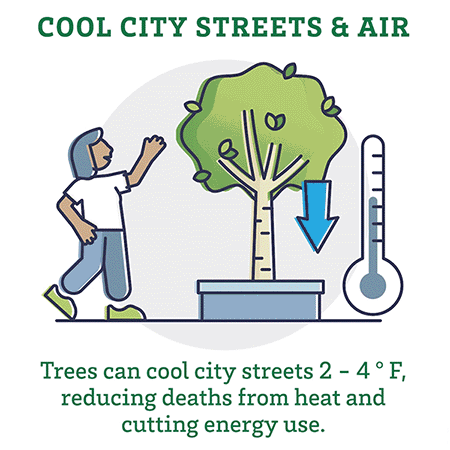
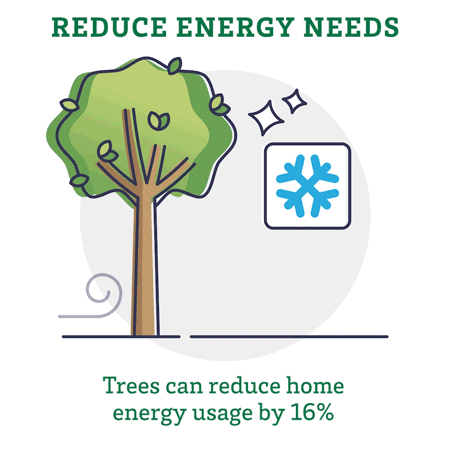
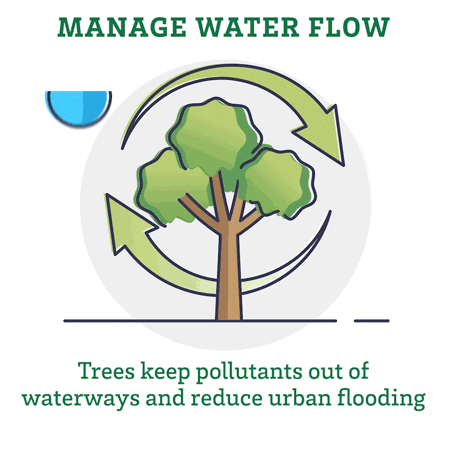

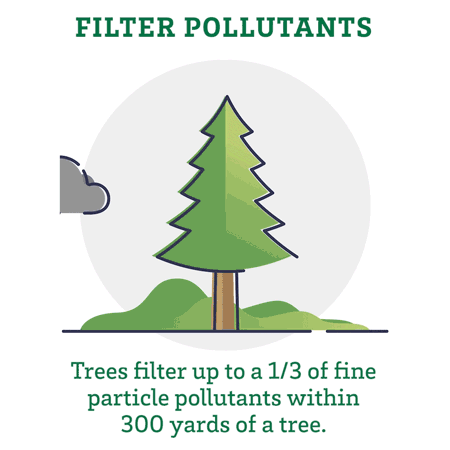
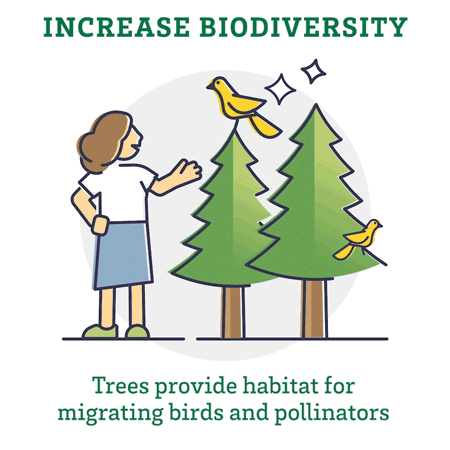
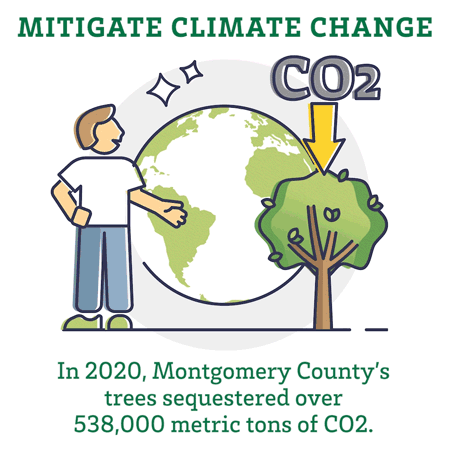
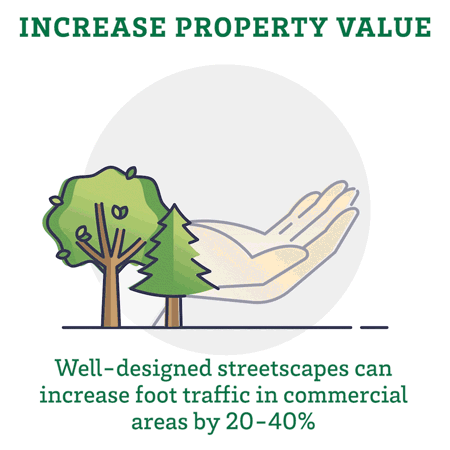
Frequently asked questions
Native trees are well suited to our environment and typically require little maintenance once established. They provide habitat for far more native pollinators than non-native trees and are unlikely to outcompete other native species. The species on this list of native trees qualify for the Reforest Montgomery $50 discount program. If you are interested in learning even more, this comprehensive list of native trees includes information about most species native to Montgomery County.
Young trees need 25 gallons of water per week. They should be watered twice per week either by leaving your hose on a trickle 1-2 feet from the base of the trunk for 1-2 hours or filling a watering bag. Most watering bags hold 15 gallons of water, so should be filled 1-2 times per week. You can sign up to receive Reforest Montgomery watering reminders in your inbox.
Deer are one of the most dramatic threats to young trees, damaging them by eating new growth and rubbing antlers against their trunks. You will see a variety of tree protection methods, but we recommend using wire caging secured to 1-2 wood stakes for the maximum protection. If you are applying for a Forest Conservation Plan, please use this specification.
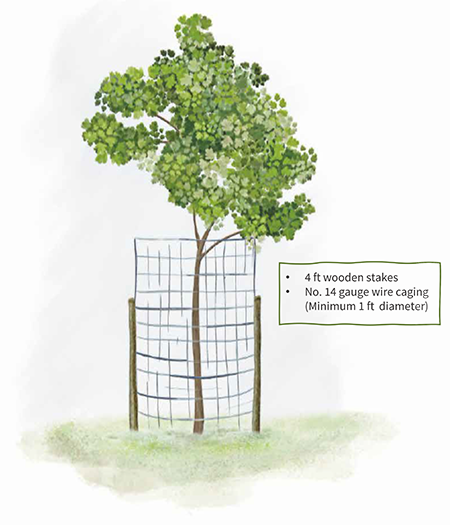
Trees should be pruned if they have dead branches or an otherwise undesirable form. Pruning should occur during winter to encourage new growth in the spring. Considering pruning a tree? Watch this video to learn more about appropriate tools and techniques.
The Reforest Montgomery newsletters below contain recommendations for managing non-native invasive species that can harm native trees and other helpful information.
July 2021 – Cicada Damage & Watering Techniques
January 2022– Cicada Damage & Winter Tree Care
January 2023 – Winter Tree Care